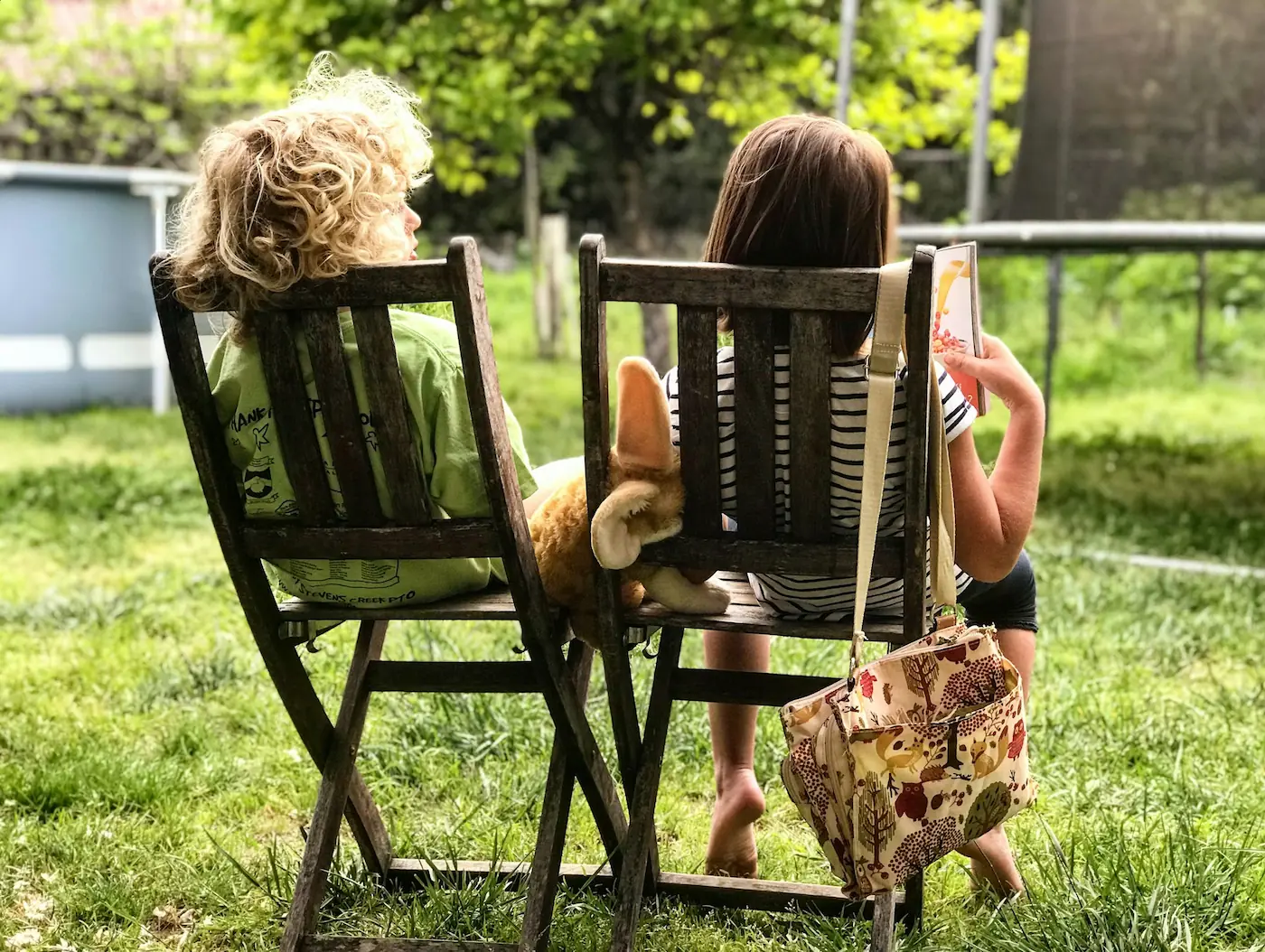Gardens have long been cherished as places of tranquility and beauty, offering a respite from the hustle and bustle of daily life. However, they can also serve as vibrant community hubs that bring people together, fostering strong neighborhood bonds and a sense of collective responsibility. An open garden, one that invites neighbors to share in its bounty and beauty, can transform a neighborhood in remarkable ways. In this article, we explore how to create and maintain an open garden that strengthens community ties, offers educational opportunities, and provides a shared space for social interaction. Let’s explore how to create neighborhood bonds with an open garden.
Jump to:
The Concept of an Open Garden

An open garden is a shared green space where the boundaries between private and public blur. Unlike a traditional private garden, an open garden invites neighbors and community members to participate in its creation, maintenance, and enjoyment. This concept can vary widely, from a simple shared vegetable plot to a more elaborate community garden featuring a variety of plants, seating areas, and spaces for events.
An open garden is a shared green space where the boundaries between private and public blur. Unlike a traditional private garden, an open garden invites neighbors and community members to participate in its creation, maintenance, and enjoyment. This concept can vary widely, from a simple shared vegetable plot to a more elaborate community garden featuring a variety of plants, seating areas, and spaces for events.
The idea is to create a welcoming environment where people can gather, work together, and enjoy the fruits of their collective labor. By doing so, an open garden can help build trust, encourage collaboration, and create a stronger sense of belonging among neighbors.
Benefits of an Open Garden
Building Community Connections
One of the most significant benefits of an open garden is its ability to bring people together. Working side by side in the garden provides a natural setting for neighbors to get to know each other, share stories, and build relationships. This sense of community can lead to stronger neighborhood bonds and a more supportive living environment.
Promoting Physical and Mental Well-being
Gardening is known to have numerous health benefits, including increased physical activity, reduced stress, and improved mental well-being. An open garden provides an accessible space for people of all ages to engage in these healthy activities, promoting overall wellness within the community.
Enhancing Food Security
By growing fruits, vegetables, and herbs, an open garden can contribute to local food security. Neighbors can share in the harvest, reducing their grocery bills and ensuring access to fresh, healthy produce. This can be particularly valuable in urban areas where fresh food options may be limited.
Educating and Inspiring
An open garden can serve as an educational tool, teaching both children and adults about gardening, sustainability, and the environment. Workshops, demonstrations, and hands-on activities can inspire a new generation of gardeners and environmental stewards.
Beautifying the Neighborhood
A well-maintained garden can significantly enhance the aesthetic appeal of a neighborhood. It creates a pleasant, green space that everyone can enjoy, increasing property values and instilling pride in the community.
Steps to Create an Open Garden

Gather Support and Form a Group
The first step in creating an open garden is to gather support from your neighbors. Host a meeting to discuss the idea and gauge interest. Form a core group of enthusiastic volunteers who are willing to help plan and maintain the garden. This group will be crucial in driving the project forward and ensuring its success.
Identify a Suitable Location
Finding the right location is key to the success of an open garden. Look for a spot that is accessible to the community, has adequate sunlight, and can be secured if necessary. Public parks, vacant lots, and even large backyards can all be potential sites. Be sure to obtain any necessary permissions or permits from local authorities or property owners.
Plan the Garden
Once you have a location, it’s time to plan the garden. Consider the following elements:
- Layout: Design a layout that maximizes the use of space and allows for easy access to all parts of the garden. Include paths, raised beds, and seating areas.
- Plants: Choose a variety of plants that will thrive in your climate and soil conditions. Include a mix of vegetables, fruits, herbs, flowers, and native plants.
- Infrastructure: Think about the infrastructure needed, such as water sources, compost bins, tool storage, and fencing if necessary.
- Accessibility: Ensure the garden is accessible to everyone, including those with disabilities. Raised beds, wide paths, and seating can make the garden more inclusive.
Source Materials and Resources
Gather the materials and resources needed to create the garden. This might include soil, compost, seeds, plants, tools, and building materials for raised beds or fencing. Look for donations or discounts from local businesses, nurseries, and garden centers. You can also organize fundraising events or apply for grants to cover costs.
Involve the Community
Involve as many people as possible in the creation of the garden. Host community workdays where neighbors can help with planting, building, and other tasks. This not only spreads the workload but also fosters a sense of ownership and pride in the garden.
Establish Guidelines and Maintenance Routines
To keep the garden thriving, establish guidelines and maintenance routines. Create a schedule for watering, weeding, and other tasks, and encourage community members to sign up for shifts. Clear guidelines on garden use and behavior can help ensure the space remains welcoming and respectful.
Organize Events and Activities

An open garden can be much more than just a place to grow plants. Organize events and activities that bring people together and make the garden a focal point of the community. Consider hosting:
- Workshops and Classes: Offer gardening classes, cooking demonstrations, and sustainability workshops.
- Social Events: Plan potlucks, picnics, and community celebrations.
- Volunteer Days: Schedule regular volunteer days to maintain and improve the garden.
- Art and Music: Invite local artists and musicians to perform or display their work in the garden.
Communicate and Promote
Keep the community informed and engaged through regular communication. Use social media, newsletters, and bulletin boards to share updates, upcoming events, and volunteer opportunities. Highlight the benefits of the garden and encourage new members to get involved.
Overcoming Challenges
Creating and maintaining an open garden is not without its challenges. Here are some common issues and how to address them:
Funding
Securing funding for an open garden can be a challenge. Explore various funding sources, including grants, donations, and fundraising events. Partner with local businesses and organizations that may be willing to sponsor the garden or provide in-kind support.
Vandalism and Theft
Unfortunately, vandalism and theft can occur in community gardens. Mitigate these risks by involving the community in the garden’s upkeep, which can foster a sense of ownership and responsibility. Installing fences, locks, and security cameras can also help protect the garden.
Disputes and Conflicts
Disagreements may arise among community members regarding the garden’s management or use. Establish clear guidelines and a conflict resolution process to address issues promptly and fairly. Regular meetings and open communication can also help prevent misunderstandings.
Weather and Environmental Challenges
Weather conditions and environmental factors can impact the garden’s success. Choose resilient plants suited to your climate, and implement sustainable practices like rainwater harvesting and composting. Be prepared to adapt and make changes as needed.
Success Stories
Many communities around the world have successfully implemented open gardens, transforming their neighborhoods and creating lasting bonds. Here are a few inspiring examples:
The Edible Bus Stop, London
The Edible Bus Stop began as a guerrilla gardening project in a neglected urban space and has since grown into a network of community gardens across London. These gardens provide fresh produce, green spaces, and opportunities for community engagement in urban areas.
P-Patch Community Gardens, Seattle
Seattle’s P-Patch program includes over 90 community gardens, offering residents a place to grow their own food and connect with neighbors. The program emphasizes sustainability, education, and inclusivity, providing garden plots to individuals, families, and community groups.
Incredible Edible, Todmorden
Incredible Edible is a community gardening initiative that started in Todmorden, England, and has spread worldwide. The project encourages residents to grow food in public spaces, fostering a sense of community and increasing access to fresh produce. Explore our Yards | Topic Page
People Also Ask
What is an open garden?
An open garden is a shared community space where neighbors come together to garden, socialize, and participate in various activities. It promotes social interaction and community engagement.
How do I start a community garden?
Starting a community garden involves finding a suitable location, involving the community in planning, gathering resources, and working together to build and maintain the garden. Regular meetings and events help keep the community engaged.
What are the benefits of a community garden?
Community gardens enhance social connections, improve mental and physical health, provide educational opportunities, and beautify the neighborhood. They can also increase property values and promote environmental sustainability.
How can I involve my neighbors in an open garden project?
Involve your neighbors by organizing planning meetings, seeking their input, and assigning roles and responsibilities. Regularly scheduled workdays and community events will help keep everyone engaged and committed.
What sustainable practices can be adopted in a community garden?
Sustainable practices for a community garden include composting, rainwater harvesting, using organic gardening methods, and planting native species. These practices help maintain a healthy garden and protect the environment.
Conclusion
An open garden is more than just a shared green space; it’s a catalyst for community building, education, and environmental stewardship. By bringing neighbors together to create and maintain a garden, you can strengthen neighborhood bonds, promote well-being, and create a vibrant, inclusive community. Whether you’re in an urban, suburban, or rural area, an open garden can transform your neighborhood and provide a lasting legacy of cooperation and connection. So gather your neighbors, roll up your sleeves, and start planting the seeds of a stronger, more connected community.


